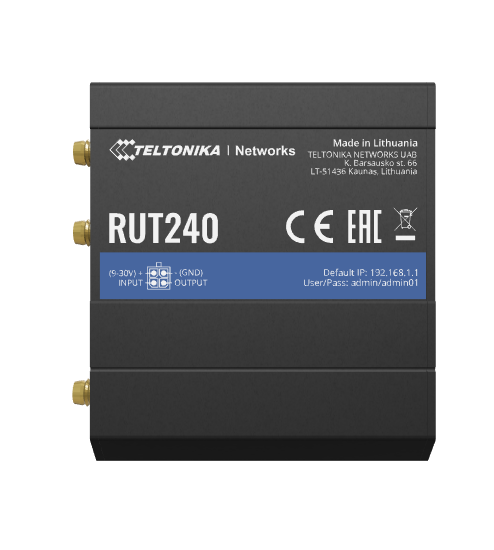
Software updates are vital to ensure high security, optimize performance, and improve user experience. As always, we are happy to announce that Teltonika Networks RutOS is updated to version v.R_00.07.01. We therefore invite you to take a minute and go through the key highlights of the latest additions and changes to the software.
RutOS says “Hello!”
Good news for all German speakers who use our devices! After a short break, the German language is returning to Teltonika Networks products. We hope this improves the user experience for our German speaking users. Please note that some newer features may still take a while to be fully translated, but most of RutOS can already be enjoyed in German.

RutOS is coming to RUT240!
Just as the latest update unleashed the full potential of RutOS for the RUT9** family routers, joining a previous group of products in the RUTX**, RUT3** and TRB** series, it is now said as well Welcome to our all-time bestseller RUT240 . Having all devices on the same platform will enable streamlined firmware updates and more available features. This also means that the devices will receive OpenWRT and kernel updates at the same time as all other products using RutOS.
Wireless mesh
Although we’ve been offering mesh functionality for a while, the latest update will simplify configuration. RutOS now supports the Wireless Mesh 802.11s standard. It offers a faster alternative to connect various wireless devices to the network without setting up any infrastructure (including setting up access points, stations or hotspots). 802.11s works at Layer 2 and allows nodes to see each other as if they were connected to a switch.
New VPN protocol
Safety has always been our priority. Just as we offer our customers flexibility and provide them with the tools they find suitable for their projects. As such, we already offer an extensive list of VPN services available, including OpenVPN, Zerotier, IPsec, Wireguard, GRE, and numerous others. This time, at the request of our customers, we decided to add another option to our users – Tinc. This VPN daemon uses tunneling and encryption to create a secure private network between hosts on the internet. Appearing as a network device at the IP level, no adaptation to existing software is required. This VPN is better suited for advanced users as it doesn’t have a web interface, at least for now.
Fast roaming
The 802.11r standard is an addition to the previous 802.11 that enables seamless connectivity from wireless devices on the move. It enables quick and imperceptible client transitions from one access point to another. The connection switches to an alternate Access Point (AP) based on distance instead of operating based on network load. Whenever the wireless device moves too far away from the AP, it will connect to another one that is close at that time. However, the process happens so quickly that the connection is not affected and users do not notice the change.
Improved IPsec throughput for RUTX** routers
IPsec is one of the few popular VPN tunnels that protect data exchange using cryptographic security services. However, this process adds an “overhead” to each packet entering the tunnel, which requires more bandwidth than the actual packet size to get through the IPsec tunnel. With the latest update, we have more than doubled IPsec throughput for RUTX** series routers. So this latest improvement means our users don’t have to compromise performance over security and can enjoy both.
base update
Since it is a customized OpenWRT software, the RutOS base has been updated with OpenWRT version 21.02. This means that our system has become better optimized and more secure after completing the latest bug fixes, eliminating vulnerabilities and adding new supported components. See the changelog on our wiki for more details. Along with OpenWRT, the Linux kernel has been updated to version 5.4.147. The full list of updated features can be found on the OpenWRT website.

